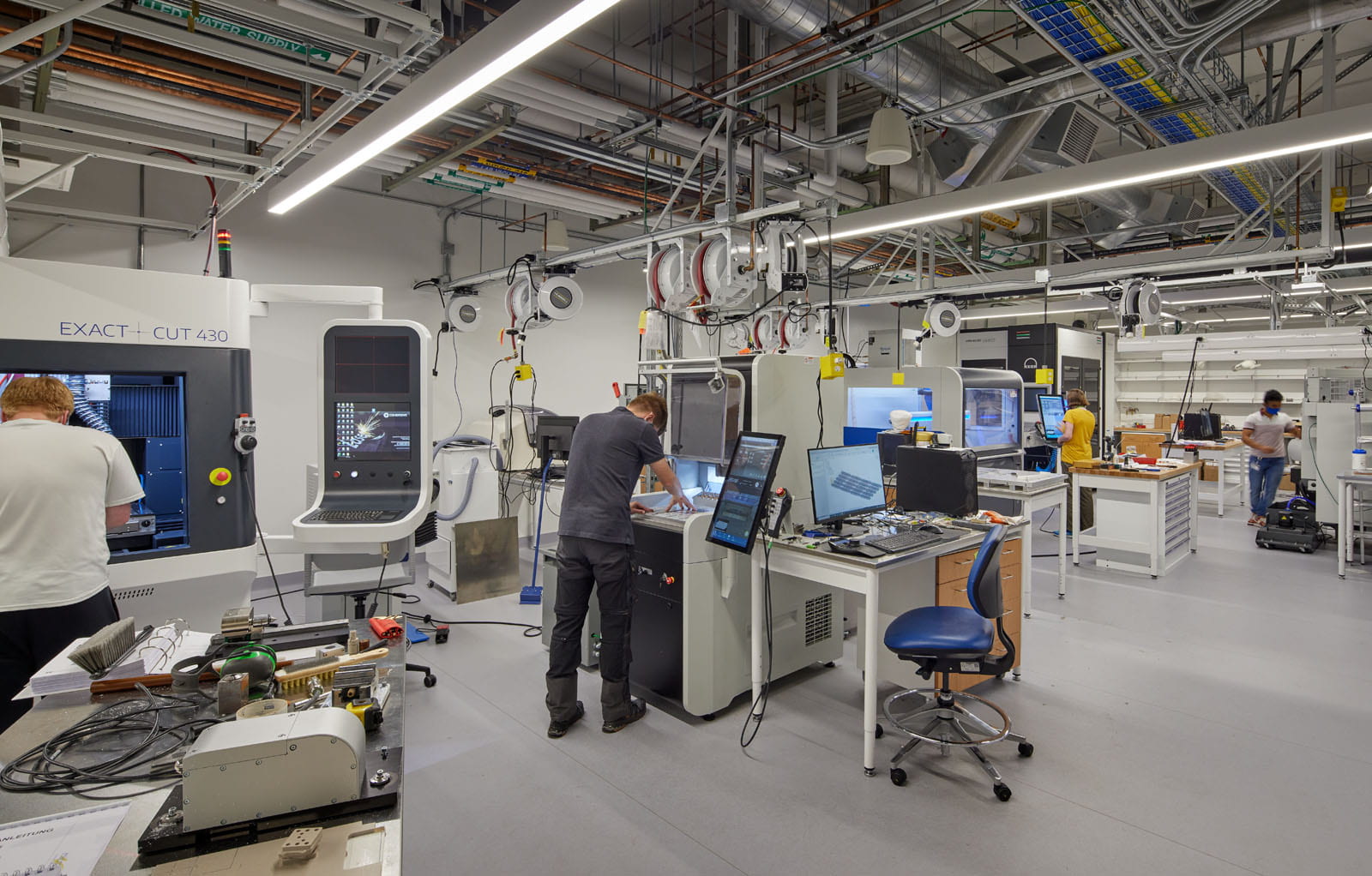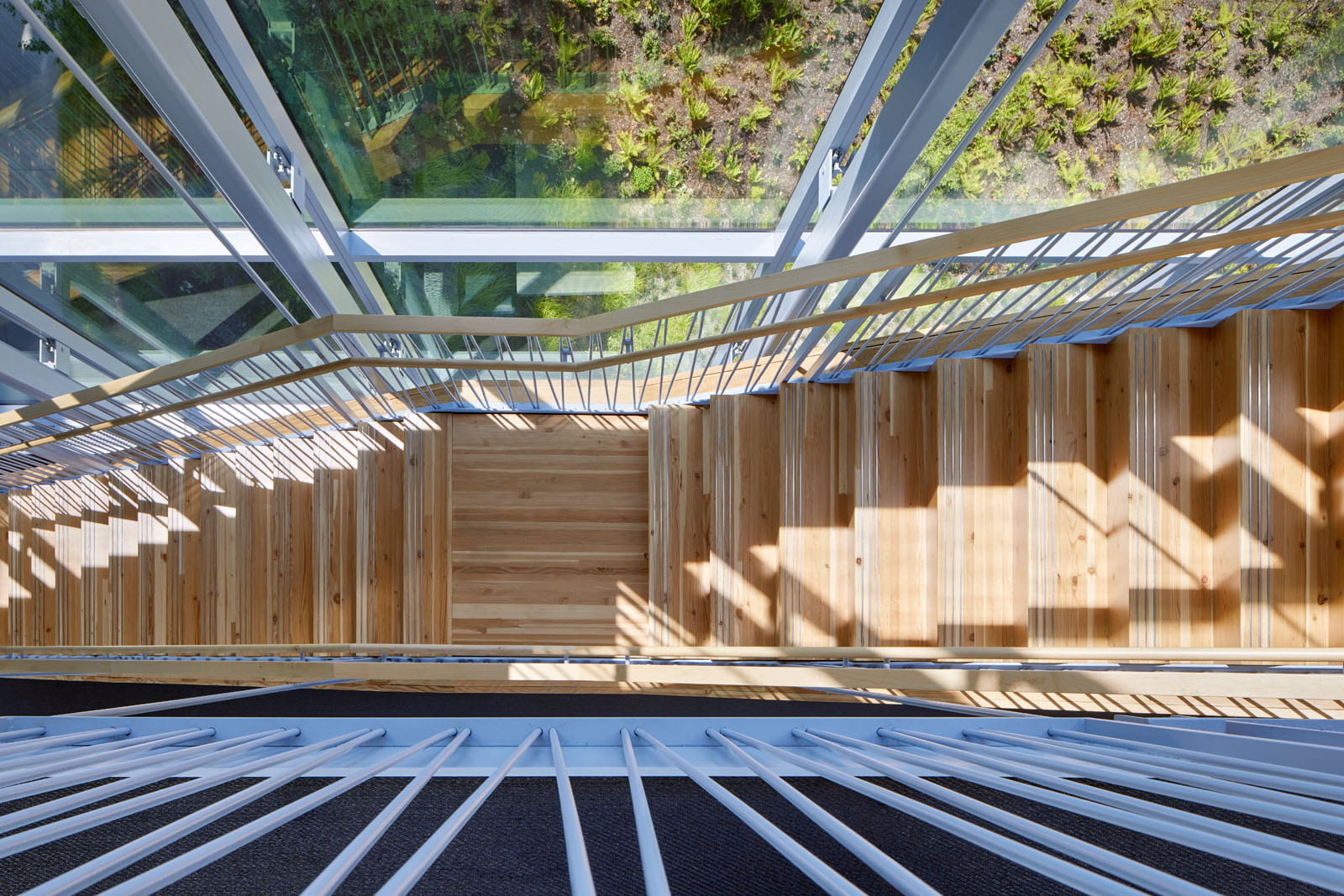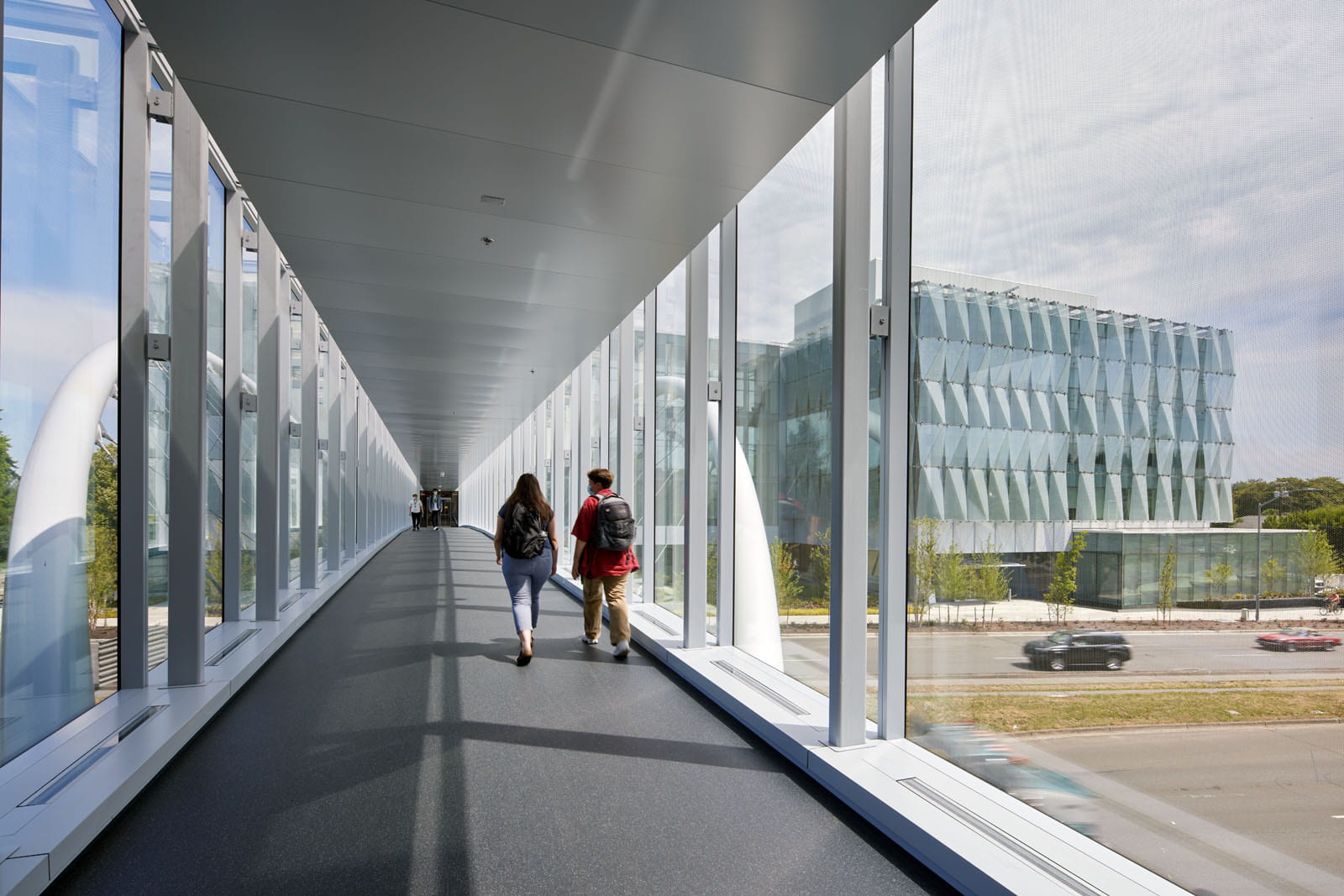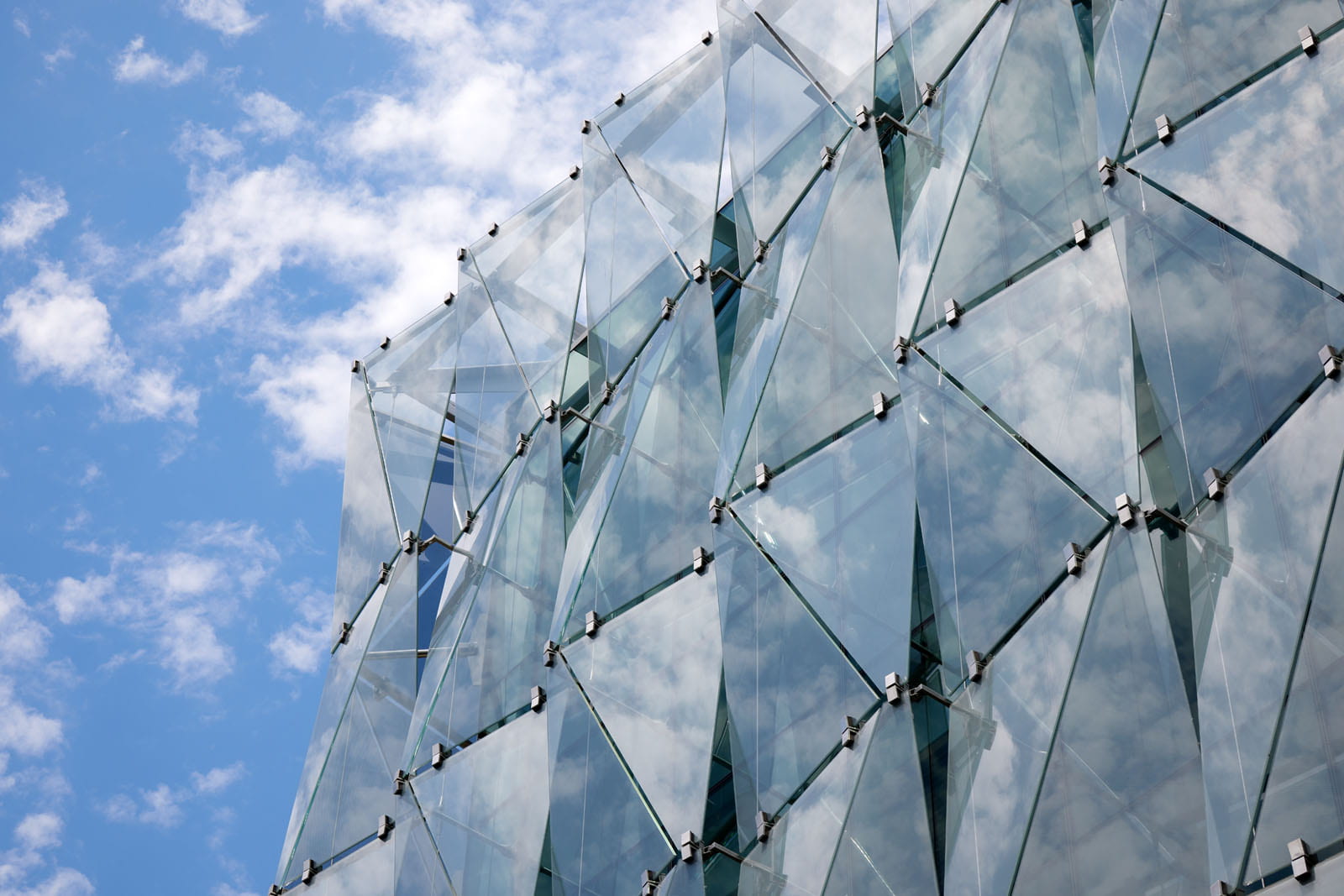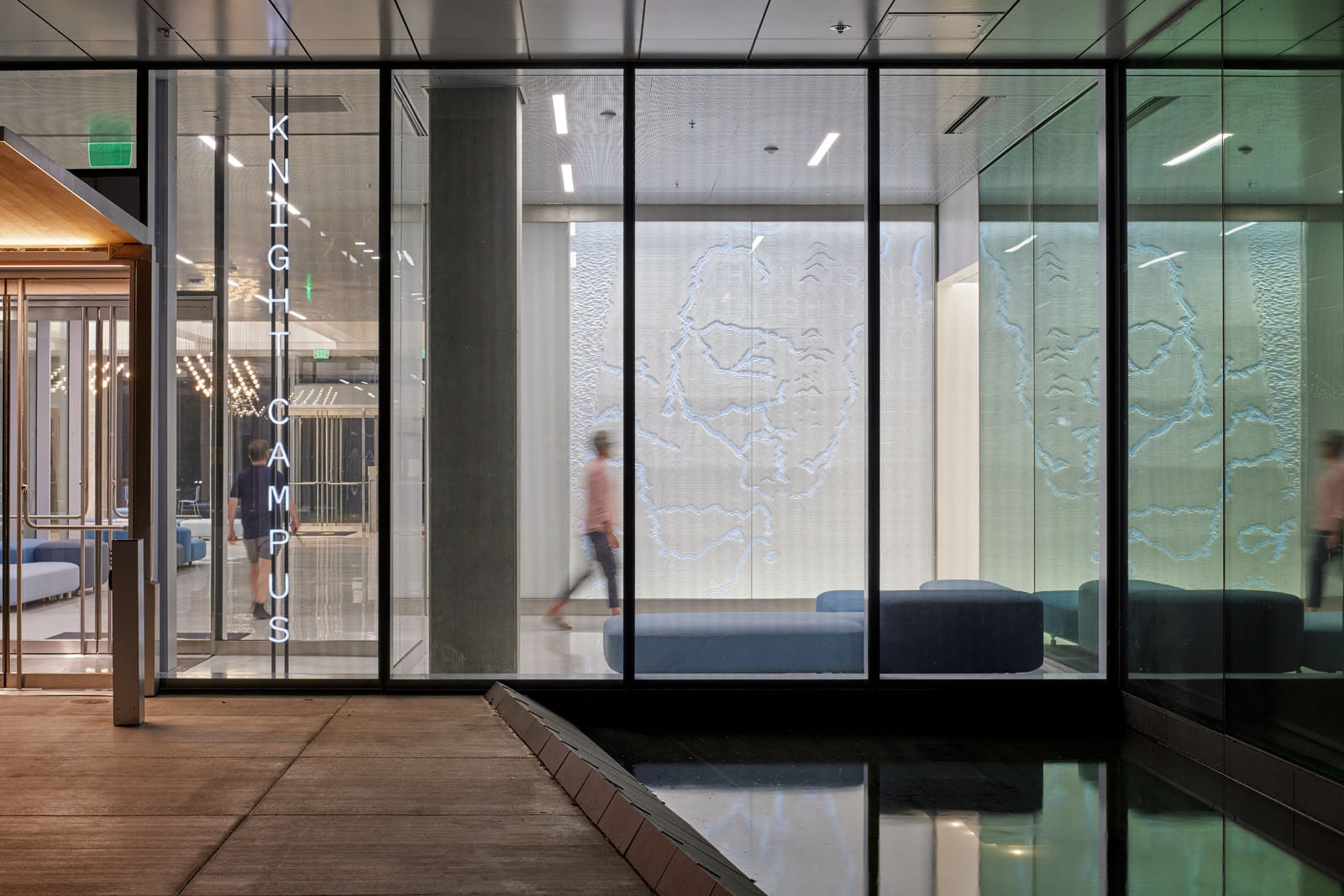CFAR Project Incubator’s 2021-2022 Fellows
Image Caption: University of Oregon Knight Campus for Accelerating Scientific Impact. Photo credit: Bruce Damonte, Knight Campus Media Assets
ABOUT
The CFAR Project Incubator (CPI) is a partnership between the University of Oregon Department of Art’s Center for Art Research (CFAR) and Phil and Penny Knight Campus for Accelerating Scientific Impact, which affords artists working in any medium the opportunity to explore and conceptualize new work as a part of a vibrant, interdisciplinary research community that is supported by cutting-edge facilities and technical staff. This program is born out of CFAR and Knight Campus’s goals to create nimble systems that catalyze innovation and discovery by responding to the needs of individual’s specific research agendas. CPI’s emphasis is not necessarily on the production of a body of work, but instead on speculative, practice-based inquiry focused on ideation, experimentation, prototyping, testing, fabricating, and theoretical research to initiate and incubate new work. This program is generously funded by The Ford Family Foundation.
Image caption: The R.A.W. PostLibrary Generator (PLG) is a site-specific system that opens space for experimental forms of collaborative and more-than-human co-composing and new attentions to unpredictable weathers, microbiomes, temporalities, and watersheds. (Photos by Karin Bolender)
Karin Bolender
Residency Dates: 11/1/21 – 11/30/21
Project: The R.A.W. PostLibrary does not hold volumes of fiction or information; it energetically resists their traditional forms, leaving its purposes in question. Now opening with alternative power, the PLG system holds hot R.A.W. compost beside cold water from the seasonal creekflow to create voltage through a special thermo-electric compost-generator device created with TSA engineers. What will provide the cold source when the creek ceases to flow? What else might PLG compost energy generate? Just some of many questions the PostLibrary holds. Open.
The PLG is designed to rely on unreliable weathers, microbial action, and passing flows and to be present with its own failures and uncertainties. Months of CPI research/practice over the winter led to a new grasp of this insight from Rodale’s Book of Composting: “All [methods] involve acquiring a sensitivity to the well-being of compost’s microscopic laborers, which is as much an art as a science.”
Karin Bolender shared her experience creating contemporary conceptual frameworks and working with Knight Campus researchers to develop a thermoelectric generator to power her R.A.W. PostLibrary in new & unforeseen ways. Read more about her project, her thoughts on the Knight Campus, and the many connections she made during her time here.
Image caption: Carla Bengtson, Beyond Human (Mind-Muscle), video still, 2022-in progress, in collaboration with Darion Smith (choreographer), Juliet Palmer (composer), and Peter Wetherwax (biologist). Misei Daimaru, dancer.
Carla Bengtson
Residency Dates: 1/4/2022 – 2/4/2022
Project: Based on multispecies, speculative projects rooted in collaboration between artists, scientists, musicians, choreographers materials, and nonhuman subjects, this project will explore the possibilities of a “third space” where disciplines, methodologies, species, and forms are in dialogue and previously unthought and unfelt ideas and experiences can emerge and be physicalized in order to better understand the intersection between human and nonhuman sensory modalities and behaviors, especially where they are impacted by climate change.
Colin Ives
Residency Dates: 2/7/2022 – 3/4/2022
Project: Sculptural manifestations of video and animation works that were developed through artificial intelligence, machine learning, and algorithmic programming.
The sculptural projects I developed at the residency were inspired by Orreries, Astrolabes and Armillary Spheres. I’m drawn to the way early navigational devices and models of the galaxy operated both culturally and functionally. The ornate manner of their construction pointed to uses beyond the practical; they were objects heralding the newly ordered world that they presaged. We may speak of “code objects,” but computer models and other predictive programming lack a material site for reflection on the complex
Image caption: “Design for Living Systems” featuring digitally fabricated models that display the investigation of growing media, species, and digital materials by Mary Polites.
Mary Polites
Residency Dates: 4/11/2022 – 5/6/2022
Project: To investigate the potential of adaptive lightweight, environmentally specific infrastructures to integrate natural systems within the context of architecture and indoor spaces.
Jeremy Rotsztain
Residency Dates: 5/16/22 – 6/3/22
Project: Virtual landscape paintings of Oregon’s Cascade Mountains that can be experienced using Virtual Reality head-mounted displays.
John Park
Residency Dates: 6/6/2022 – 7/6/2022
Project: To give voice to the health of our rivers and state of our forests by researching and applying environmental measurement techniques and historical datasets, and to use the very landscapes being measured as a canvas to display that information back to the public so they can “hear” and “see” the silent status of the trees above us, and rivers below.
Robert Arellano
Residency Dates: 7/8/22 – 7/22/22
Project: To develop a visual plan for transmedia architecture that conflates the physical spaces of architecture, sound, and digital art into the Hypertext Hotel, with collaborator Robert Coover.
Brian House
Residency Dates: 5/9/22 – 5/13/22 + 8/15/22 – 9/2/22
Project: Normally too low-frequency to hear, infrasound travels vast distances through the atmosphere. It comes from superstorms, wildfires, energy infrastructure, and HVAC systems at massive data centers. Big phenomena like these are entangled with the climate crisis. If we could hear infrasound, could we listen to the crisis as it unfolds all across the globe? Brian House’s Macrophones project appropriates Cold War technology and combines it with cutting-edge signal processing and machine learning in order to make infrasound audible.
During his CFAR Project Incubator residency, House used a Macrophone to record twenty-four hours worth of infrasound among old-growth trees in nearby Willamette National Forest—an ideal location to listen to distant sounds without interference from nearby machinery. An installation at University of Oregon’s Knight Campus pairs a binaural mix of this audio—pitch-shifted upward into our auditory range—with a 360-degree time-lapse video of the forest, allowing visitors to hear a sample of the low-frequency sounds continually passing through our atmosphere.
